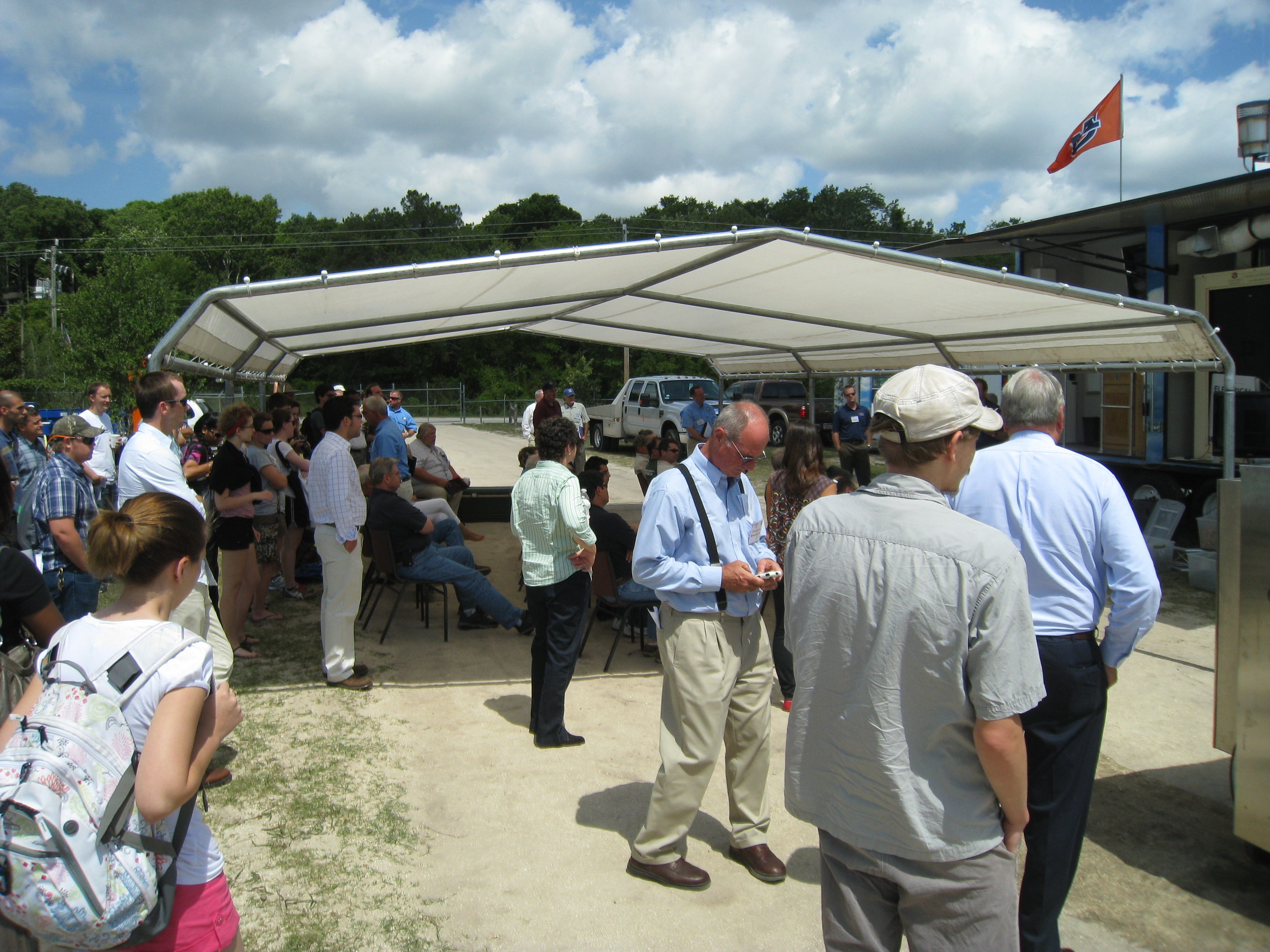UF/IFAS Tri-county Biofuel Symposium

There were many different speakers at the Biofuels Symposium that spoke on different types of biofuels from wood gasification to biodiesel. The first keynote speaker was Dr. Steve Taylor from Auburn who gave a basic overview of biofuels. Over 378,000,000 gallons of gasoline are consumed by the U.S. each day and 23 million are used by the United States. The U.S. wants to be at 36 billion gallons of biofuels by 2022. The new types of biofuels that are being used are forest biomass, agricultural waste, municipal solid waste, and algae. In wood gasification, heat, oxygen and steam are used to break down biomass into synthesis gas. The synthetic gas can be converted to synthetic diesel.
Dr. Jarek Novek spoke about the wood resources in the tri-county area. There are 15.99 acres of timberland in Florida and 39% of it is forested. Eleven million of the acreage or 70% of it is owned privately. The amount of woody biomass that would contribute to electricity production in Florida by 2025 is 2%. While the amount by other renewable energy sources would be 5%.
There were a couple of demonstrations outside with biofuel based vehicles. The first vehicle came from Auburn and was a mobile biomass gasification semi-truck. The semi-truck turns wood biomass into synthetic gas. The wood chips are heated in the front of the unit and is run by propane initially until it heats up and is then able to run on the syngas that it produces. The unit uses 50 pounds of biomass to produce 25 kilowatts per hour which is enough to power 3 to 5 homes.
The second outdoor demonstration was of two woodgas generators used to power vehicles. Woodchips are put into the generator and partially combusted. In the part of the generator called the combustion zone, all of the water is evaporated, and the wood chips are turned into coal. A diesel truck with a motor converted to support the gas from the woodgas generator can run at a maximum speed of 50 mph with a load of 23,228 lbs.
Dr. J Brennan talked about sweet sorghum and grain sorghum for ethanol. The vegetable and potato growers in the region need more income and an ethanol plant could be a viable option and help create more jobs. Since sorghum is already used as a cover crop in between vegetable seasons, there are between 25 and 45 thousand acres used for sorghum each year. It helps to capture the residual nitrogen fertilizer, keeps the water from being contaminated, and holds the organic matter in the soil. The amount of sugar that is yielded from each acre is between four and six thousand pounds. Each acre produces between 286-429 gallons. The value is $2.17/gal.
Dr. David Wright talked about canola and camelina being used for biofuels in Florida. The canola plant has 38-45% of oil and 37-35% of protein from the seed. It is the number one feedstock for biodiesel in the United Kingdom, Canada, and North Dakota. The problems with it are that there is not a strong market for it as well as the fact that it has low commodity prices. When planting canola it is good to plant early, plant shallow, control weeds early, scout and control insects, and harvest promptly.
Dr. Geoff Dahl talked about the myths of dairy digesters. The first point was about how there are not enough dairies in Florida, when in reality it is a five hundred million dollar industry in Florida. He talked about how more than manure can be used and that food waste as well as crop residue can al be put into a digester. It has been working over in Europe for over twenty years so it can be a long term solution in Florida as well. The technology of digesters has been proven and can be optimized for the farm that it is on.
